Somatic • Movement • Freedom
Articles

Knowing Yourself by How You Move
If you want to learn something new about yourself when you make a particular movement you can do so any time you choose to bring your attention and awareness to your internal sensations of that movement.
Only you can feel your internal sensations from doing the movement. Going into and most importantly coming out of the movement, slowly and gradually, gives you valuable information and you can learn to sense into the movement from your own internal perspective. You come to know what it is you know and know that you know it and feel it. Additionally, you can know what you don't feel and don't know yet.
You don't need to be limited by what you already think you know; instead you can move more powerfully into unknown territory because you are learning to slow down the speed with which you move which frees your potential to discover new and interesting possibilities and experience subtle differences.
You may notice perhaps that one side of your lower back area feels tighter than the other and curiously one arm feels heavier than the other but your fingers are clenched. As you provide your brain with more new information by continuing the slow practice of your movement, later, when you least expect it and you are carrying on your daily life, you begin to feel change and you realise you are acting with increasing precision and greater freedom.
Change is a natural process when you give yourself time to feel the internal sensations from your movement and know that you know how you are moving. This process is known as differentiation where more brain cells and connections between brain cells get involved in reorganising your movement making the impossible possible, the possible comfortable and the comfortable elegant.

Creating A Comfortable Space
With a little bit of practice it is possible to create that moment in our day when we know we won't be missed or disturbed, where we can bring ourselves to lying down or sitting on a supporting surface and be completely comfortable. This truly is a real treat we can give to ourself and it can be deliciously restful.
... Read more
You may like to try creating a new space, different perhaps to what you currently might think is comfortable, allowing yourself to engage in a process of discovery and self-learning. Gather together plenty of large, soft woollen blankets and towels. For hard floors, a piece of carpet off-cut to fit all of you on with arms and legs spread out is great. Layer your blankets wide enough to support your head, shoulders and pelvis with your arms and hands released out freely by your sides. It’s nice to have extra blankets for folding underneath your head to reach a comfortable height, especially if it is not yet comfortable to lie on your back. It may be more appropriate for you to come down to lying on your side. A small towel between your knees is lovely in this position. Firm cushions are helpful for supporting your arms and head when you are choosing to come to sitting and a bolster is nice under your knees for that extra little bit of comfort for both sitting and lying.
Everyone is naturally capable of creating opportunity to notice the subtle changes of breathing, posture and movement when internal quiet and stillness is found.

